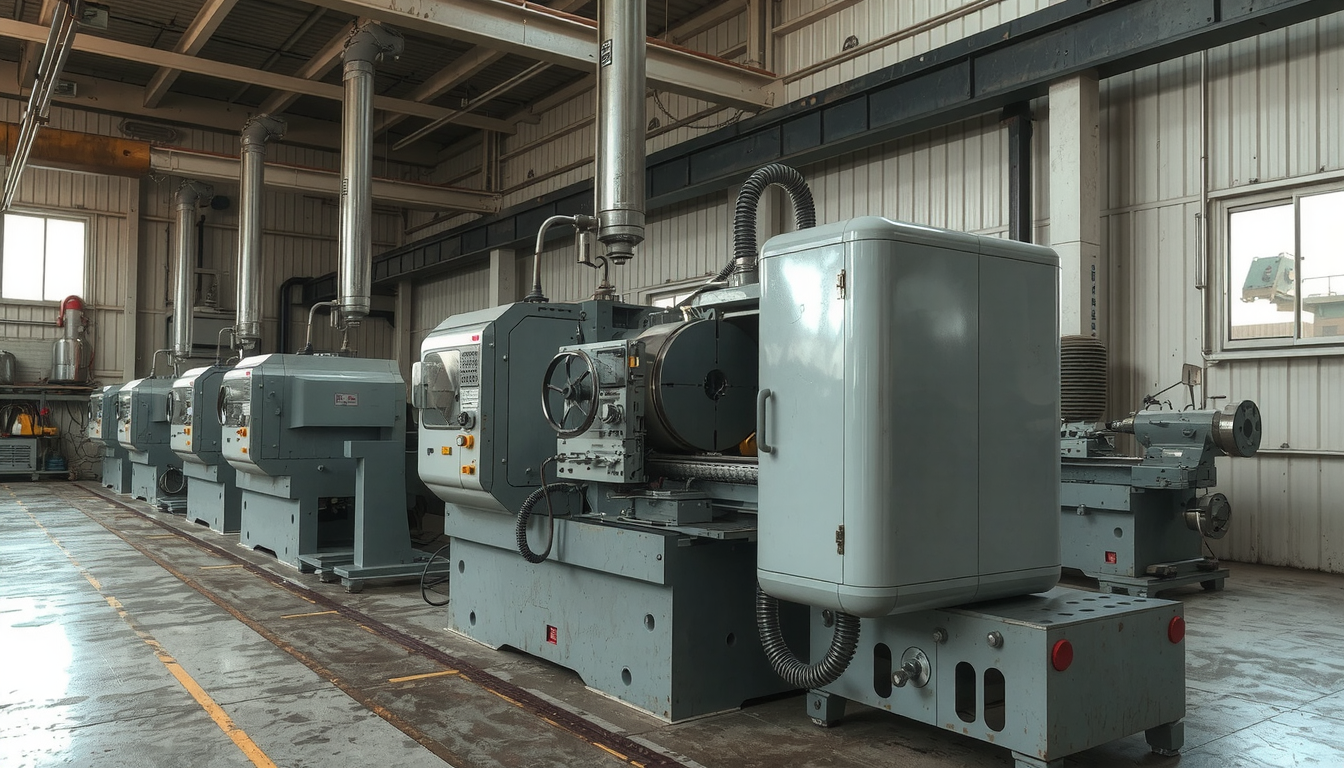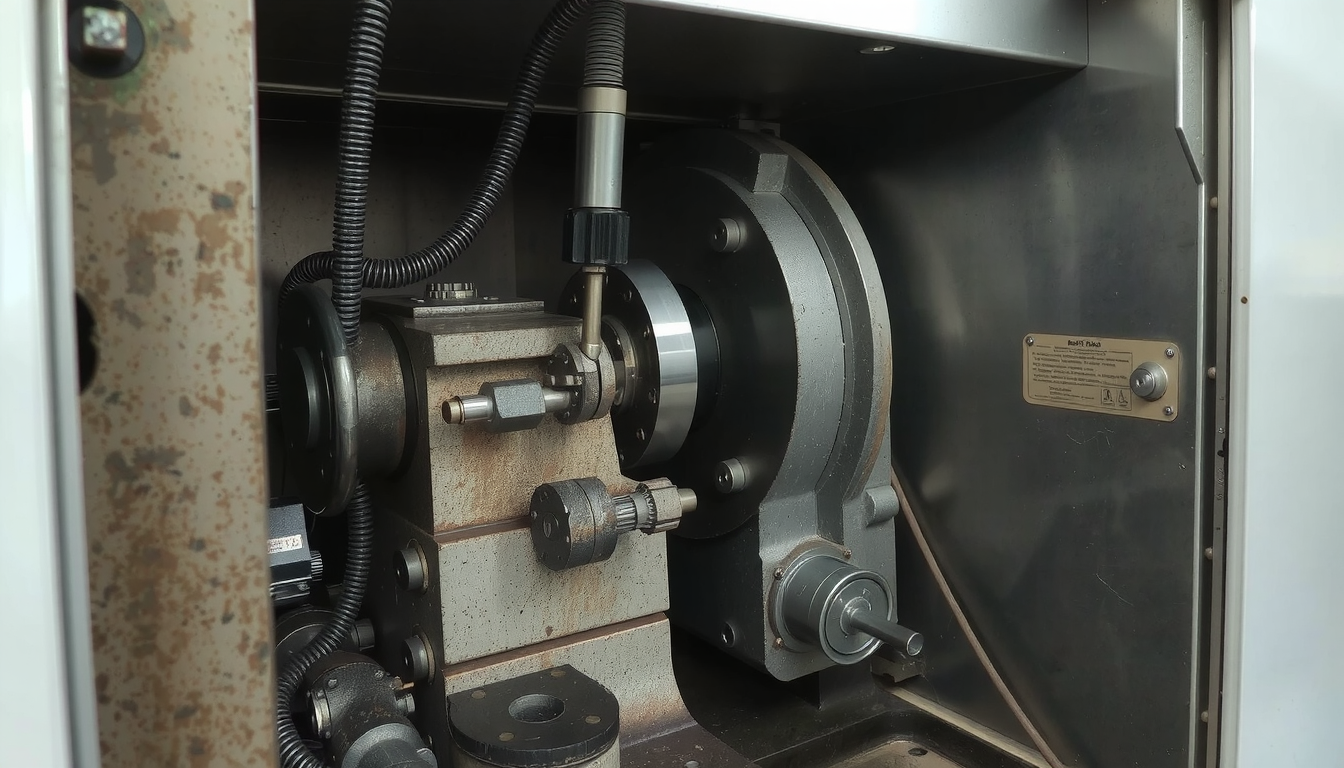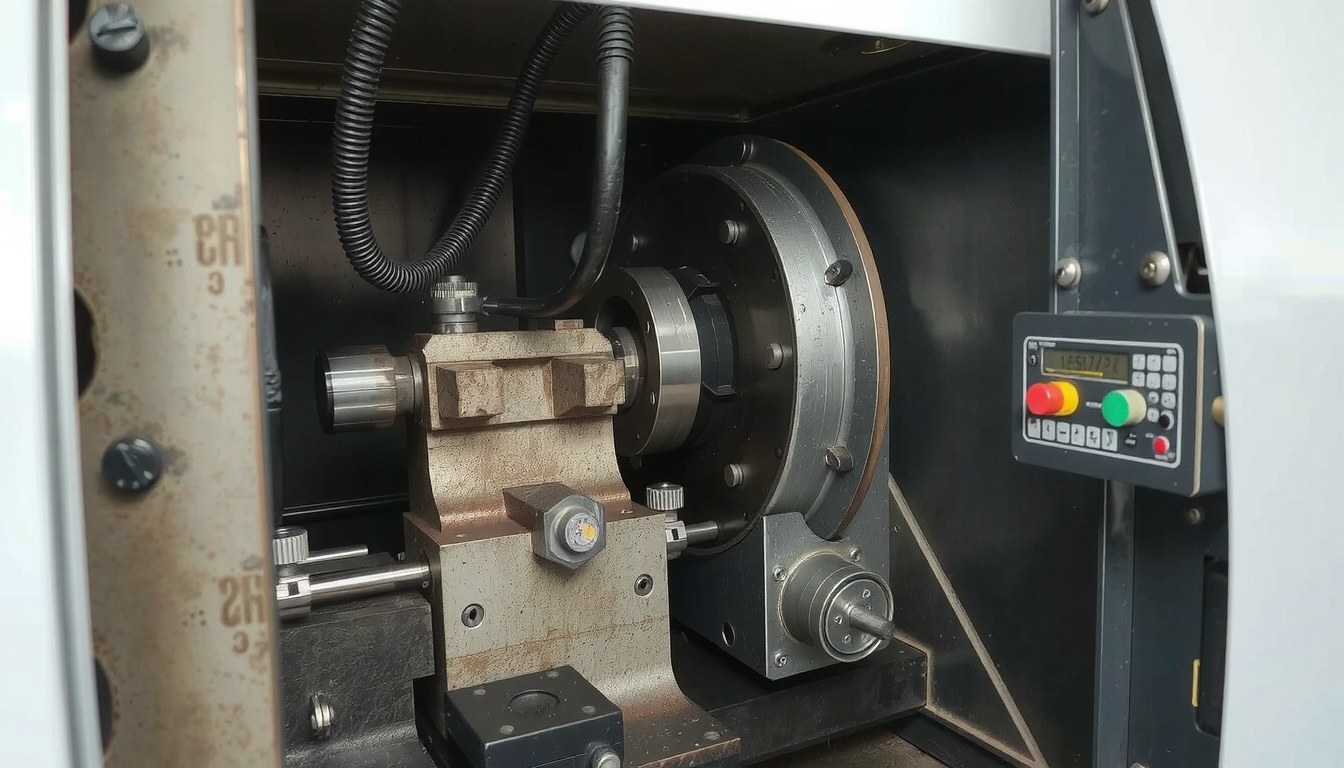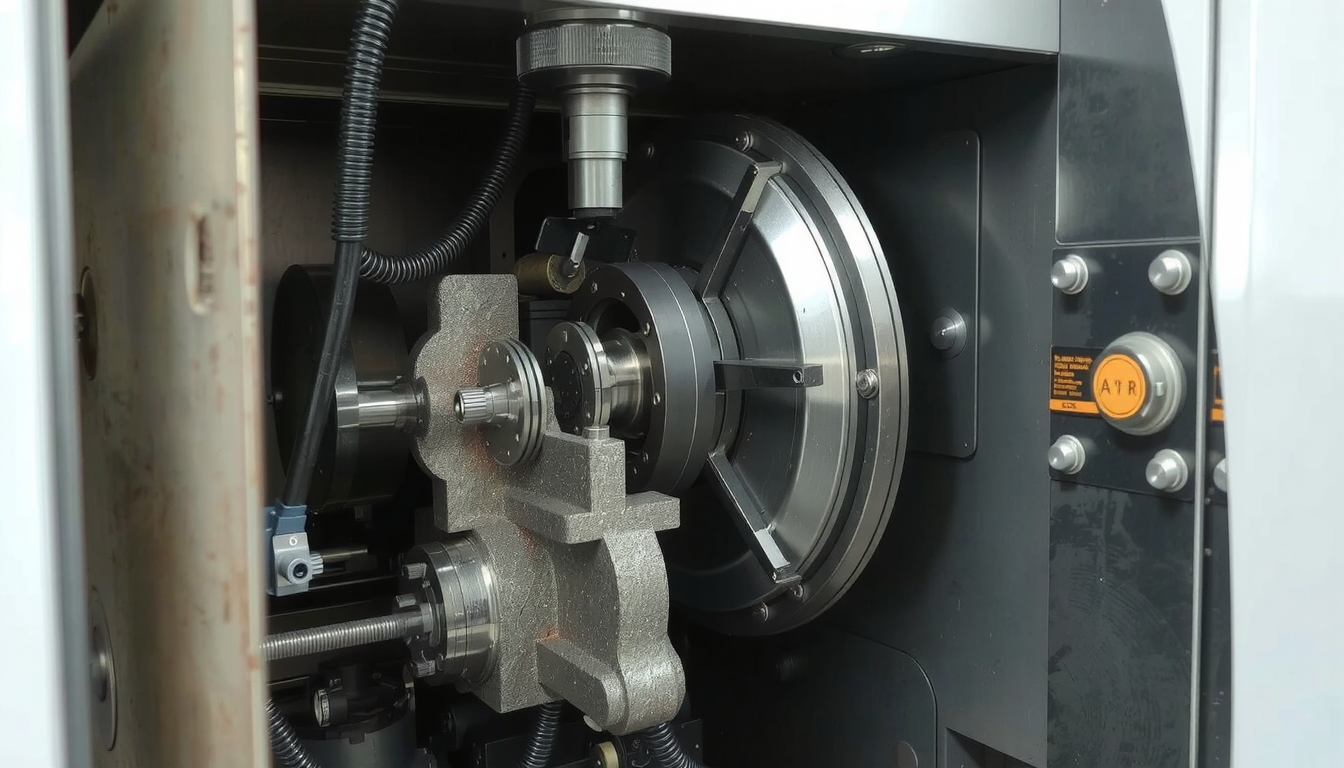Introduction: What Is a CNC Lathe?

A CNC lathe is a device that makes materials round. It turns a workpiece into a circular object while a knife tool removes the excess materials. As such, it is logical to think of CNC lathes as automated metal turning devices. CNC is the abbreviation of Computer Numerical Control.
Imagine a metal or plastic potter’s wheel with much more accuracy. A computer directs it. The machine follows a computer program to cut every bit of material. The automation of machine tools through the pre-programmed design instructions is the process by which CNC lathes work. This is the reason behind them being extremely powerful.
This mechanization is instrumental in the manufacturing of intricate parts. Instead of manually operating a machine, the faster and more precise process is used to make things that are identical. Learning about what are CNC lathes is pivotal in recognizing modern manufacturing.
How a CNC Lathe Works, Step-by-Step
To see CNC lathes in action, it is essential to witness the full procedure. The trip from the digital idea to the real part runs clearly. The transformation of the design to the finished part is as follows:
- The Digital Blueprint (CAD)
The design stage is done on a computer. A designer creates a 2D or 3D model of the part. They use computer-aided design (CAD) software. This digital model is the exact blueprint for the final product. - Creating the Instructions (CAM)
The next step is the transfer of the CAD file to the computer-aided manufacturing (CAM) software. This program is functioning as a translator. It is transforming the visual model into G-code instructions. The CNC lathe is programmed to operate with the G-code. This machine language gives the locations for the movement of the workpiece and also the speed of the cut along the length of the material. - Machine Setup
A worker is preparing the CNC lathe for work. They clamp the raw material into the machine’s chuck. The raw material is called the workpiece. Then they load the cutting tools into the tool turret. Lastly, they run a calibration process. This checks that the machine knows where the tools and workpiece are. - Running the Program
The worker makes sure that everything is in order by loading the G-code program into the CNC controller. With the press of the button, the machine is activated. The workpiece starts to rotate at high speed. The cutting tools move along the desired paths as programmed. They cut, drill, and shape the material into the final part.

- Quality Control
As soon as the machine completes its task, the worker removes the part. The end operation is a careful examination. They use precise measuring tools to check every dimension. This way the part does not deviate from the original CAD blueprint. This guarantees that the part is crafted according to the quality standards.
Anatomy of a Modern CNC Lathe
Grasping the fundamental parts of a CNC lathe helps to understand its functionality. All components are necessary parts in the precise manufacturing of the components. Let’s look at the key components of a CNC lathe and their functions.
- Headstock
The headstock of the lathe is the “powerhouse” of the system. It is the main motor and drive system that spins the workpiece. - Spindle & Chuck
The spindle is the rotating shaft that is powered by the headstock. The chuck is attached to the spindle’s end. It is a special clamp that works with jaws that are made to hold the workpiece properly. It makes sure that the workpiece will stay in shape while it is rotating. - Tailstock
The tailstock is the component of the machine that complements the headstock in the spine it gives to the workpiece. This avoids bending or shaking during cutting. - Bed
The bed is the massive, immovable base of the entire machine. It is the platform on which all the other components are attached. The bed is the machine’s strength and stability source, which are both necessary to achieve accuracy in the operation. - Carriage & Tool Turret
The carriage is the frame that carries the cutting tools. The carriage moves to and fro along the bed (the Z-axis). The cutting tools are fitted on the tool turret, which is mounted on the carriage. It holds multiple cutting tools. The turret can rotate automatically to bring the correct tool into position for each cutting operation. - CNC Controller
The CNC controller is the “brain” of the lathe. This is the computer where the worker loads the G-code program. It scans the code and feeds signals to the motors, thereby enabling them to perform the correct movements.

Manual Lathe vs. CNC Lathe
The evolution of manufacturing brought a shift in manual lathe mechanism to the new CNC lathes. Both turning machines achieve the desired final shape through a rotation process. However, their main dissimilarities in terms of control, velocity, and precision make them stand out. This information clarifies a lot of reasons why CNC technology is widely used.
Here is a simple assessment:
| Feature | Manual Lathe | CNC Lathe |
|---|---|---|
| Control | Operated by a machinist using handwheels and levers. | Controlled by a computer program (G-code). |
| Precision | Depends entirely on the operator’s skill and focus. | Extremely high and consistent from part to part. |
| Repeatability | Low. Each part will have small, human-made variations. | Very high. Can make thousands of identical parts. |
| Complexity | Best for simpler shapes and one-off parts. | Capable of making highly complex and detailed shapes. |
| Speed | Slow, especially for making multiple parts. | Very fast, making it ideal for large production runs. |
| Operator Skill | Requires a highly skilled artisan to make precise cuts. | Requires a skilled programmer and setup technician. |
One of the best benefits of CNC lathes is having ultra-high precision. A well-cared-for CNC lathe can keep its tolerances of ±0.0005 inches (0.013 mm) and even surpass this limit. This level of precision is almost never achievable through manual operations and this is especially true in long-term runs.
Exploring Different CNC Lathe Types
While there are various types of CNC lathes, they can be separated into those with different numbers of “axes”. Axes refer to the directions in which the machine tools can move. The machines that have more axes can create a larger variety of parts. Learning about the different types and specifications of CNC lathes will help you become more confident in operating them.
- 2-Axis CNC Lathes
The simplest CNC lathe is the 2-axis. It is the most basic machine. Also, it features a Z-axis and an X-axis. These machines are the best for simple turning, facing, and drilling operations on round parts. - 3-Axis CNC Lathes
A 3-axis lathe requires a C-axis and live tooling. Live tooling means that the tools in the turret can rotate, in addition to the workpiece. This allows the machine to perform milling operations. For instance, it can drill holes on the side of a part or cut a flat surface.

- Multi-Axis CNC Lathes (4, 5+ Axes)
These are elite machines with more movement axes added. In some cases, they possess a Y-axis for the tool to go up and down. Such lathes can make extremely complex parts in their initial setup with higher precision as a bonus – no need to transfer the part to other machines. - Swiss-Type Lathes
A Swiss-type CNC lathe is a super-thin CNC lathe used for producing tiny, long, and complicated parts. They are frequently utilized in the medical and electronics industries. Some end products include bone screws and miniature connectors fabricated with very high precision.
What Production Are They Used For? Common Applications
Now that we have a clear understanding of what CNC lathes are, let’s look at what they produce. Their ability to shape metal and plastic with high precision makes them useful in almost every industry. The parts that are created can be found almost everywhere. They are often concealed in the everyday use things that we possess.
Here are just a few examples of where CNC-turned parts are used:
* Aerospace: Engine parts of high-stress, landing gear parts, and custom fittings.
* Automotive: Driveshafts, pistons, valve components, and axles.
* Medical: Bone screws, customized surgical instruments, and precision implants.
* Electronics: Small motor shafts, connectors, and protective cases.
* Oil & Gas: Flanges, valves, and parts of the drilling rigs.
The results that we have is that, to have a successful project, it is not only the machine but the people behind it that matter. For companies needing high-quality turned parts without having the capital to buy and operate a CNC lathe, the best choice is often to use CNC lathe services. This way they can freely get machinery completely supported by the know-how necessary for the best output.
Conclusion: The Power of Precision Turning
In this guide, we’ve provided a full answer to the question, “what are CNC lathes?” We started with a straightforward definition and discussed their working mechanism. Together, we discovered their essential components, and how they stack up against older kinds of machines. We covered the kinds of CNC lathes that are out there as well as the large variety of goods they help create.
CNC lathes are key tools in contemporary manufacturing. They combine the turning technique, which has been in use for a long time, with the computer control features provided. The combination results in precision, speed, and quality that are impossible to match.
As technology advances, the automation and efficiency of CNC lathes will become even more important. To see these advanced manufacturing ideas in action, exploring the capabilities of a modern production facility like Mekalite offers a look into the future of making things.
Frequently Asked Questions (FAQ)
What’s the main difference between a CNC lathe and a CNC mill?
A CNC lathe shapes the part by rotating the workpiece and moving a cutting tool against it, while a CNC mill is made by clamping the workpiece and using a rotating cutting tool to remove material.
What is G-code?
G-code is the programming language used to control CNC machines. It is a series of text-based commands that tells the machine exactly where to move. It tells the machine how fast to go, what tool to use, and all other actions needed to make a part from a block of material.
What materials can a CNC lathe work with?
CNC lathes are very versatile. They can machine a wide range of materials. This includes metals like aluminum, steel, stainless steel, brass, and titanium. They can also machine many plastics, such as ABS, nylon, and polycarbonate. Sometimes they can even work with wood or special composites.
Are CNC lathes expensive?
Yes, the cost of a CNC lathe can vary a lot. Smaller, basic models might cost tens of thousands of dollars. Large, industrial multi-axis machines can cost several hundred thousand dollars or more. This high initial cost is why many businesses choose to use CNC machining services instead of buying their own equipment.
Do you still need a skilled person to operate a CNC lathe?
Yes, absolutely. Although the machine is running automatically, a skilled programmer or operator is necessary. They are responsible for creating the CAM program, adjusting the machine, and selecting the right tools. They also conduct quality checks and troubleshoot. The tasks that consist of deep technical knowledge and hands-on experience.

